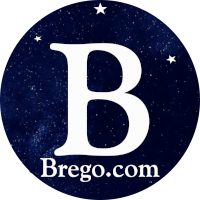 Understanding Web3: A Comprehensive Guide for Businesses
Understanding Web3: A Comprehensive Guide for Businesses
Syndicated By Web3Business.com
Web3, also known as Web 3.0, represents the next generation of internet technologies, marking a profound evolution from the early days of the web (Web1) to the current state of sophistication (Web3). This comprehensive guide explores the essence of Web3 and its potential transformative impact on businesses.
The Evolution from Web1 to Web3
The journey from the inception of the internet (Web1) to the current state (Web3) is marked by a significant shift in paradigms. Web1 was characterized by static web pages and limited interactivity, while Web3 introduces a dynamic, decentralized, and user-centric approach to the online experience. Understanding this evolution is crucial for businesses navigating the digital landscape.
What is Web3?
Web3 is not just a term; it’s a conceptual framework that defines the new era of the internet. Unlike its predecessors, Web3 is distinguished by key features that redefine the online experience for users and businesses alike.
Key Features of Web3
- Decentralization: In Web3, data is stored across a network of nodes, enhancing security and eliminating single points of failure. This decentralization ensures a more resilient and tamper-proof data storage system for businesses.
- Interoperability: Web3 promotes seamless interaction between different networks, allowing businesses to operate across diverse platforms effortlessly. This interoperability is fundamental for creating a unified digital ecosystem that transcends traditional boundaries.
- User Control: In the Web3 world, users have unprecedented control over their own data. This shift in data ownership dynamics empowers businesses to build trust with their customers, as users have more agency over how their information is utilized.
How Does Web3 Work?
The functioning of Web3 revolves around decentralized networks, where data is distributed and transactions are verified by a consensus mechanism. This ensures transparency, security, and trust, creating a robust foundation for businesses to thrive in the digital age.
Web3 and Businesses: A New Paradigm
Web3 holds the potential to revolutionize various aspects of business operations. Beyond the fundamental features, it introduces advanced security measures through cryptographic encryption, ensuring the integrity and confidentiality of business transactions and communications. The integration of blockchain technology within the Web3 framework is another noteworthy aspect. Businesses can leverage blockchain for enhanced transparency, traceability, and accountability in various processes, from supply chain management to intellectual property.
| Aspect | Impact of Web3 |
|---|---|
| Data Ownership | In the Web3 world, businesses can ensure data ownership and privacy, fostering trust and compliance with evolving data protection regulations. The use of decentralized identity solutions further strengthens the security of digital identities. |
| Decentralized Finance (DeFi) | DeFi opens up new avenues for businesses in terms of financial transactions, providing faster, more transparent, and cost-effective alternatives to traditional banking systems. Smart contracts, a core feature of Web3, automate and streamline financial processes, reducing the need for intermediaries and minimizing the risk of contractual disputes. |
Web3 Challenges and Solutions
While Web3 presents significant opportunities, businesses must also address challenges associated with its adoption. Scalability issues and regulatory concerns may arise. However, solutions exist to overcome these hurdles. Scalability can be improved through the development of layer 2 solutions, and businesses can proactively engage with regulators to establish a framework that fosters innovation while ensuring compliance.
Decentralized Autonomous Organizations (DAOs)
Decentralized Autonomous Organizations (DAOs) represent a groundbreaking concept within the Web3 framework. These entities operate on smart contracts and allow for decentralized decision-making within organizations. Businesses can explore the potential applications of DAOs in governance structures, promoting transparency and inclusivity in decision processes.
Web3 and Cross-Industry Impact
The impact of Web3 extends beyond the financial sector. It has implications for various industries, including healthcare, education, and governance. In healthcare, for example, Web3 technologies can facilitate secure and interoperable sharing of patient data. Educational institutions can explore blockchain-based credentialing, ensuring the integrity of academic achievements. Furthermore, decentralized governance models can enhance transparency and accountability in public administration.
Education and Training for Web3 Adoption
As businesses embark on the journey towards Web3 adoption, education and training become paramount. Employees and stakeholders must gain a solid understanding of Web3 principles, blockchain technology, and decentralized applications. Training programs can empower the workforce to navigate the complexities of this new paradigm, fostering a culture of innovation and adaptability.
Case Studies and Success Stories
Real-world case studies and success stories serve as valuable illustrations of the practical benefits of adopting Web3 technologies. Businesses can draw inspiration from organizations that have successfully integrated Web3 solutions, showcasing tangible outcomes such as increased efficiency, reduced costs, and enhanced trust among stakeholders.
 Community Engagement and Collaboration
Community Engagement and Collaboration
Community engagement and collaboration play pivotal roles in the Web3 era. Businesses can actively participate in decentralized ecosystems, contributing to the development of open-source projects and fostering collaborative innovation. Engaging with the community not only expands networks but also positions businesses as active contributors to the evolution of Web3 technologies.
Preparing Your Business for the Web3 Transition
The transition to Web3 can be a complex process for businesses. In addition to technical considerations, businesses must prepare their workforce and operations for the paradigm shift. Strategic steps include:
- Conducting a thorough assessment of the current digital infrastructure and identifying areas that can benefit from decentralization and enhanced security.
- Exploring partnerships with blockchain and Web3 technology providers to integrate decentralized solutions into business processes.
- Educating the team about the principles of Web3 to ensure a smooth transition and foster a culture of innovation and adaptability.
Key Takeaway
The advent of Web3 has opened up a world of possibilities for businesses. By understanding and embracing this new technology, businesses can stay ahead in the curve.






